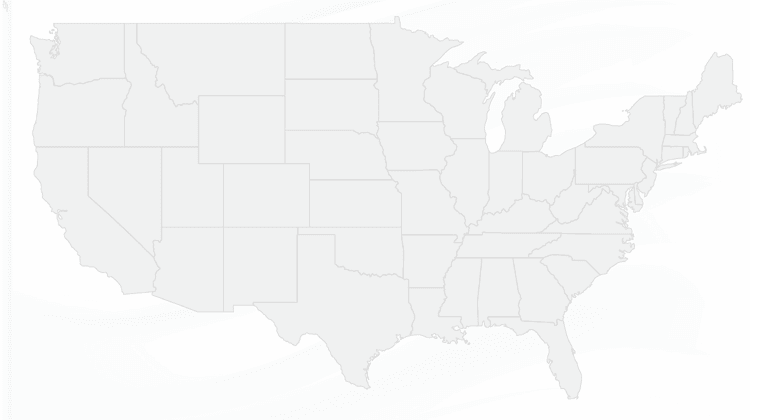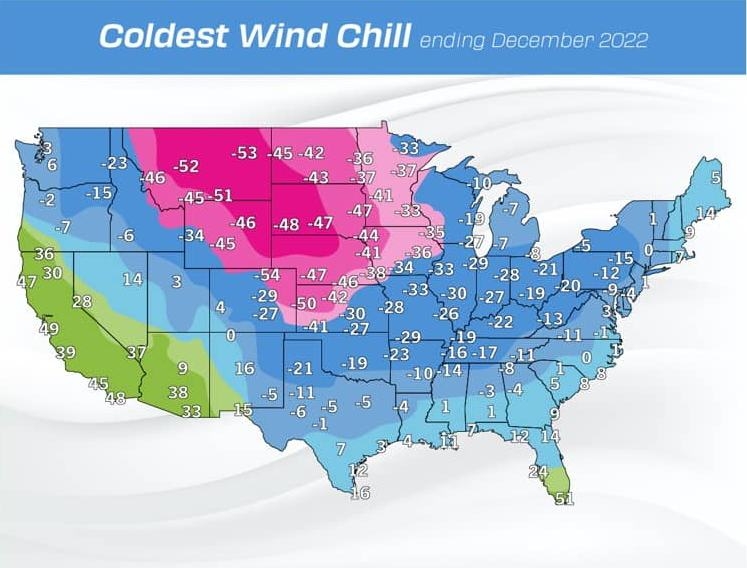Maintain
Reliability

PJM and its members and stakeholders took numerous steps in 2022 to ensure the reliability, security and resilience of the bulk electric system while adding ways to better prepare for extreme circumstances and global supply chain volatility.
PJM, in coordination with its members, addressed these factors to support the reliable, economic flow of electricity for 65 million people in 13 states and the District of Columbia.
65 Million people in 13 states + D.C.
1,419 Electric
Power Generators
88,115 Miles of
Transmission lines
The 1,419 electric power generators and 88,115 miles of transmission lines within the PJM footprint are owned by public utilities and independent companies or cooperatives.
As the federally designated Reliability Coordinator for the regional power grid, PJM coordinates these facilities’ operations moment-to-moment, hour-by-hour and day-to-day throughout the year.
Using the principle of security constrained economic dispatch, PJM works to ensure reliable, safe and economical operations in coordination with our members and stakeholders.

Winter
Operations
The PJM grid performed reliably during a 2021–2022 winter marked by relatively mild to typical cold weather. Overall, winter temperatures were average between Dec. 1, 2021, and Feb. 28, 2022.
Renewable resources made up 7% of generation, compared with coal (23%), nuclear (33%) and natural gas (36%).
In advance of the 2022–2023 winter, PJM enhanced seasonal preparation, including the rollout of a new Cold Weather Advisory to create more advance notice of challenging conditions three to five days ahead of expected weather.
The winter of 2022–2023 was less than a week old when Winter Storm Elliott arrived in the PJM region, severely impacting generators beginning on Dec. 23.
Through a series of emergency procedures, a Call for Conservation and an order from the U.S. Dept. of Energy to allow some generators to run beyond their permit limits for a short window, the PJM bulk power system remained reliable.
PJM is working on a comprehensive analysis of the events surrounding Winter Storm Elliott and lessons to be learned from the experience.
WINTER 2021–2022

NERC Standards for
Extreme weather
protection
Following the prolonged outages in Texas and the South during Winter Storm Uri in 2021, the North American Electric Reliability Corporation (NERC) followed up with a study and a proposal for stricter industry standards to better protect power plants, fuel supplies and bulk electric system components during extreme weather conditions.
These included:
In late 2022, PJM collaborated with other independent system operators and regional transmission organizations (ISOs/RTOs) to review and provide feedback to the Federal Energy Regulatory Commission (FERC) on the proposed revisions to the NERC standards to improve generator reliability during extreme cold weather events.
The first set of standards will be effective in April 2023. In comments to FERC, PJM and all other North American ISOs/RTOs urged FERC not only to approve those standards as an improvement over the status quo, but also to develop tougher standards and to support quicker implementation.
Supply chain
Resilience
Stakeholders approved permanent changes to PJM Emergency Operations Procedures to help generators respond to supply chain issues impacting both fuel and other materials needed to operate their units.
These changes afforded generators time to replenish fuel supplies in the event of potential fuel supply shortages or extreme weather.
Improved, regular communication about generation resources and data management allows PJM more flexibility in managing generation to address possible local or regional reliability concerns resulting from fuel supply shortages.

Summer
operations
In 2022, PJM met hot-weather demand with a peak of approximately
148,000 MW on July 20. In all, temperatures remained near, or just above, normal seasonal ranges.
Severe weather event
in ohio
june 13–15
A severe June storm in Ohio, including three tornadoes and straight-line wind bursts known as derechos, downed thousands of trees across the state and seven transmission lines in the AEP transmission zone alone, causing voltage instability amid increased record heat that followed the storms.A total of
58 structures and 19 transmission circuits were impacted by severe weather.
To protect the broader electrical grid, PJM issued to AEP
In further action warranted to safeguard the system, PJM directed
PJM maintained consistent communication with
and followed emergency procedures to protect the grid.
Fuel Requirements for
black start
Resources
PJM and stakeholders agreed on improvements to ensure the reliability and resilience of PJM’s black start generation resource fleet in 2022.
The improvements filed with FERC include:
one fuel-assured black start resource in each transmission zone
Additional black start resources based on reliability criteria
16-hour run requirement
Testing and verification requirements
Compensation formula rate for black start resources
Implementation through PJM-wide request for proposal process
Implementation through PJM-wide request for proposal process
Data Centers
Drive load growth
The PJM Board in December approved a series of transmission expansion projects to address unprecedented load growth in Northern Virginia from the rapid expansion of “Data Center Alley.”
Data Center growth in and around Virginia and in surrounding areas is now a key factor driving demand in the long-term load forecast. The Board’s action was informed by accelerated planning assessments, stakeholder engagement and ongoing industry coordination.
FERC audit reflects
Culture of
compliance
FERC released a wide-ranging audit of PJM markets, operations and planning in September 2022, concluding a five-year audit process.
The FERC audit examined PJM compliance with its
Between 2016 and 2021, the FERC audit identified
related to the offer cap of a self-scheduled generator.
PJM immediately began work to implement
20 recommendations by FERC related to

Maintain
Reliability

PJM and its members and stakeholders took numerous steps in 2022 to ensure the reliability, security and resilience of the bulk electric system while adding ways to better prepare for extreme circumstances and global supply chain volatility.
PJM, in coordination with its members, addressed these factors to ensure the reliable, economic flow of electricity for 65 million people in 13 states and the District of Columbia.
The 1,419 electric power generators and 88,115 miles of transmission lines within the PJM footprint are owned by public utilities and independent companies or cooperatives.
As the federally designated Reliability Coordinator for the regional power grid, PJM coordinates these facilities’ operations moment-to-moment, hour-by-hour and day-to-day throughout the year.
Using the principle of security constrained economic dispatch, PJM works to ensure reliable, safe and economical operations in coordination with our members and stakeholders.
Winter
Operations
The PJM grid performed reliably during a 2021–2022 winter marked by relatively mild to typical cold weather. Overall, winter temperatures were average between Dec. 1, 2021, and Feb. 28, 2022.
Renewable resources made up 7% of generation, compared with coal (23%), nuclear (33%) and natural gas (36%).
In advance of the 2022–2023 winter, PJM enhanced seasonal preparation, including the rollout of a new Cold Weather Advisory to create more advance notice of challenging conditions three to five days ahead of expected weather.
Natural Gas
Nuclear
COAL
Renewable Resources
The winter of 2022-2023 was less than a week old when Winter Storm Elliott arrived in the PJM region, severely impacting generators beginning on Dec. 23.
Through a series of emergency procedures, a Call for Conservation and an order from the U.S. Department of Energy to allow some generators to run beyond their permit limits for a short window, the system remained reliable.
PJM in early 2023 is working on a comprehensive analysis of the events surrounding Winter Storm Elliott and lessons to be learned from the experience.

Winter 2021–2022
December 2021
December 2021 was recorded as one of the three warmest Decembers on record in nearly every state in the PJM footprint.
January 2022
In contrast, January 2022 began with below-average temperatures, when all seven of that season’s Cold Weather Alerts were issued.
Winter Peak Load
PJM’s 2021–2022 winter peak load of approximately 129,000 MW took place on Jan. 27, 2022.
Gas Pipeline Operations
Gas pipeline operations experienced no significant disruptions or operational impacts.
Coal and oil supplies
There were no major interruptions with coal and oil supplies.
Winter Storm Elliott
December 23-25, 2022
- Cold Weather Advisory issued Dec. 20 enhanced situational awareness two to five days prior to extreme weather.
- Size and speed of cold temperature drops in the region were historic.
- As temperatures fell, power demand rose to a peak of about 135,000 MW in the evening on Dec. 23. Around the same time, forced outages reached as high as 34,500 MW.
- The strong demand continued after the peak on Dec. 23 and into Dec. 24. Even the low-point of demand on Dec. 24 was significantly greater than any other peak, or high-point of demand, for that date in a decade.
- Generator outages exceeded that of the January 2014 Polar Vortex, with an estimated level of nearly 46,000 MW by morning on Dec. 24.
- PJM’s Call for Conservation was the first since 2014.
- PJM expects to provide a comprehensive event analysis in summer 2023.



NERC Standards for
Extreme weather
protection
Following the prolonged outages in Texas and the South during Winter Storm Uri in 2021, the North American Electric Reliability Corporation (NERC) followed up with a study and a proposal for stricter industry standards to better protect power plants, fuel supplies and bulk electric system components during extreme weather conditions.
These included:
In late 2022, PJM collaborated with other independent system operators and regional transmission organizations (ISOs/RTOs) to review and provide feedback to the Federal Energy Regulatory Commission (FERC) on the proposed revisions to the NERC standards to improve generator reliability during extreme cold weather events.
The first set of standards will be effective in April 2023. In comments to FERC, PJM and all other North American ISOs/RTOs urged FERC not only to approve those standards as an improvement over the status quo, but also to develop tougher standards and to support quicker implementation.
Supply chain
Resilience
Stakeholders approved permanent changes to PJM Emergency Operations Procedures to help generators respond to supply chain issues impacting both fuel and other materials needed to operate their units.
These changes afforded generators time to replenish fuel supplies in the event of potential fuel supply shortages or extreme weather.
Improved, regular communication about generation resources and data management allows PJM more flexibility in managing generation to address possible local or regional reliability concerns resulting from fuel supply shortages.

Summer
Operations
In 2022, PJM met hot-weather demand with a peak of approximately 148,000 MW on July 20. In all, temperatures remained near, or just above, normal seasonal ranges.
Severe weather event
in ohio
june 13–15
A severe June storm in Ohio, including three tornadoes and straight-line wind bursts known as derechos, downed thousands of trees across the state and seven transmission lines in the AEP transmission zone alone, causing voltage instability amid increased record heat that followed the storms. A total of
58 structures and 19 transmission circuits
were impacted by severe weather.To protect the broader electrical grid, PJM issued to AEP
In further action warranted to safeguard the system, PJM directed
PJM maintained consistent communication with
and followed emergency procedures to protect the grid.
Fuel Requirements for
black start
Resources
PJM and stakeholders agreed on improvements to ensure the reliability and resilience of PJM’s black start generation resource fleet in 2022.
Measures proposed in a subsequent FERC filing include:
one fuel-assured black start resource in each transmission zone
Additional black start resources based on reliability criteria
16-hour run requirement
Testing and verification requirements
Compensation formula rate for black start resources
Implementation through PJM-wide request for proposal process
Data Centers
Drive load growth
june 13–15
The PJM Board in December approved a series of transmission expansion projects to address unprecedented load growth in Northern Virginia from the rapid expansion of “Data Center Alley.”
Data Center growth in and around Virginia and in surrounding areas is now a key factor driving demand in the long-term load forecast. The Board’s action was informed by accelerated planning assessments, stakeholder engagement and ongoing industry coordination.
FERC audit reflects
Culture of
compliance
FERC released a wide-ranging audit of PJM markets, operations and planning in September 2022, concluding a five-year audit process.
The FERC audit examined PJM compliance with its
Between 2016 and 2021, the FERC audit identified
related to the offer cap of a self-scheduled generator.
PJM immediately began work to implement 20 recommendations by FERC related to




